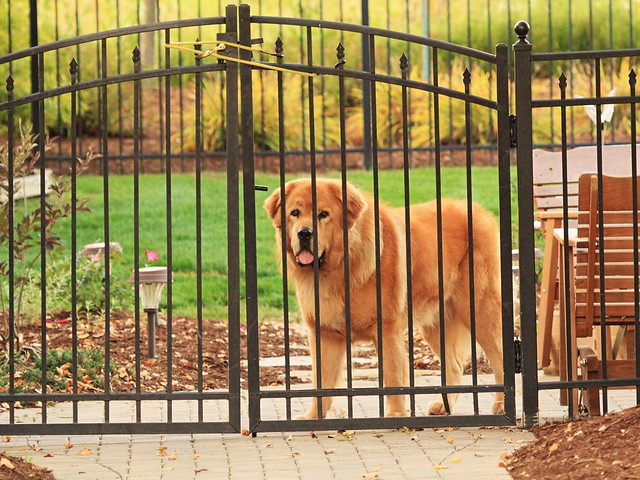During the eight years we have occupied our second home in NE Illinois, urbanization has finally caught up with us.Today I am sharing some bittersweet memories of the humble dooryard prairie that once surrounded us, now extinct.
This is the view from the front steps of our NE Illinois condominium on March 20, 2010. The slowing economy had stalled completion of the 144 town-home living units that were to occupy the entirety of the three block area around our building. My comments at the time are italicized:
Snow on the first day of Spring! The Horned Larks have just started nesting in this field.
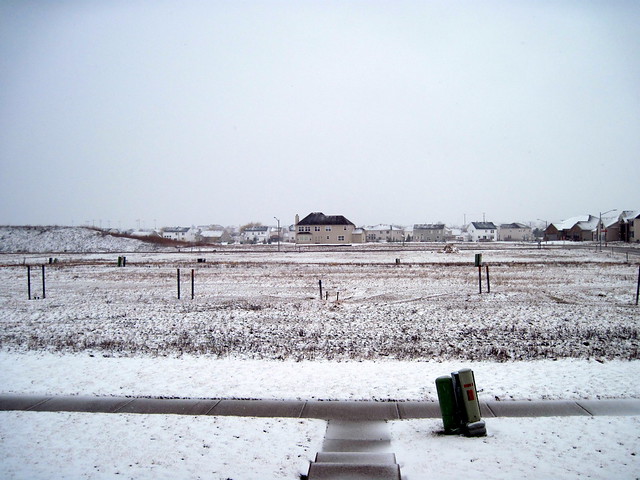
August 20, 2010
Development has been stalled due to the poor housing market, allowing the disturbed land around our condo to return to grass. (The patch of taller grass and shrubs conceals the small pond which contained water much of the year)
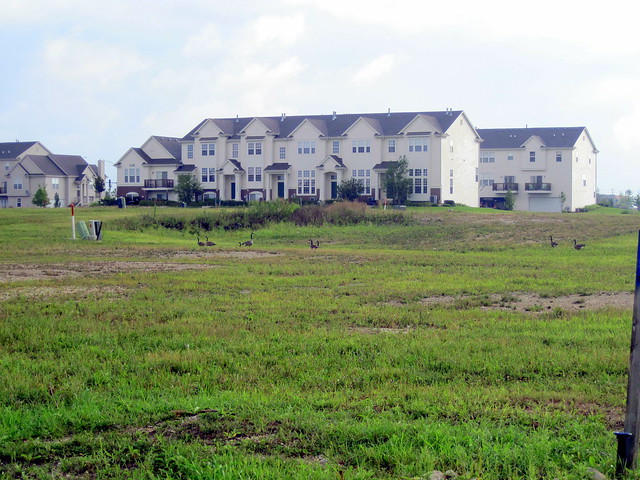
May 8, 2011:
Taken through window pane. I happened to look out the upstairs bedroom window of our condo in North Aurora (Illinois) and saw the white head of a "Blue" morph Snow Goose among the 9 Canada Geese that were foraging in and around a fluddle in the undeveloped lot in front of our home. The Snow Goose tended to associate with one of the Canada geese, and the two spent much of their time apart from the rest of the flock... The far northern edge of the breeding range of Canada geese overlaps with that of the Snow Goose. The latter species is known for "dumping" its eggs in neighboring nests. Is it possible that this Canada Goose raised this particular bird?
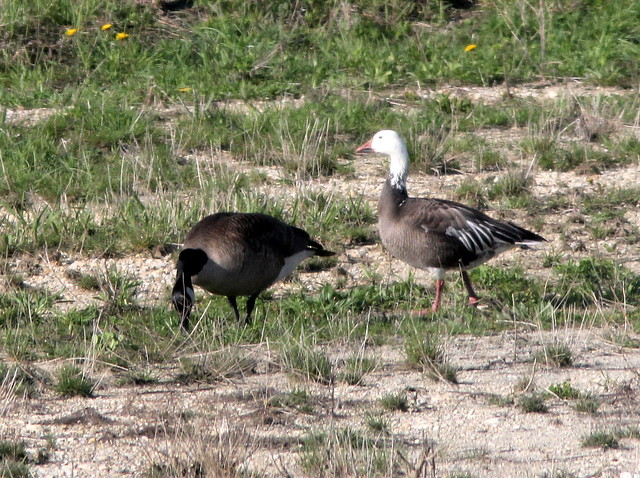
That same day, Canada Geese swam in the small pond in the open space:
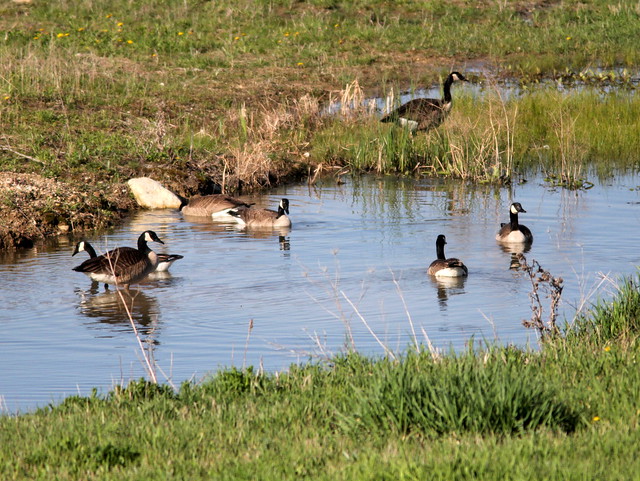
May 22, 2011:
All this week Spotted Sandpipers have been singing in the vacant lot in front of our Illinois condo. Yesterday I saw one atop a pile of rubble near the edge of our street, so I stopped there this morning, using the car as a blind, hoping to photograph them from only about 20 feet... After about 10 minutes a Spotted Sandpiper began moving between rock piles and suddenly was right in front of me.
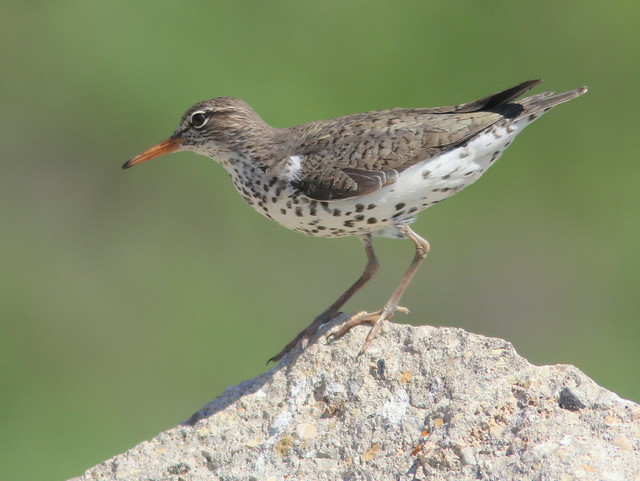
August 3, 2011:
This afternoon, the three Sandhill Cranes that we saw here yesterday returned to the disturbed block surrounding our Illinois condo. Since the builder went bankrupt, this area has gone back to grass and weeds. There is one fairly constant pond in the center, and other "fluddles" that appear and may persist for several weeks when it rains.
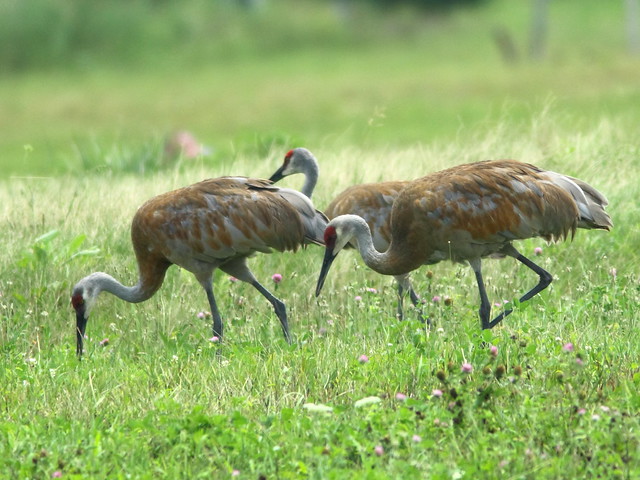
August 21, 2011:
A new yard bird, I saw this Solitary Sandpiper in the vacant lots in front of our Illinois condo this morning, just after driving out on the way to Nelson Lake. It was in a puddle caused by the heavy rainstorm yesterday. Returning home, we found these two of the same species in another puddle right outside our front door...

June 29, 2012:
Views of the shelf clouds that preceded the severe thunderstorms on June 29, 2012, North Aurora, Illinois. The spaces between the cloud layers created white ribbons that stretched 180 degrees across the sky from north to south. Taken from the front door of our condo. (Sadly, we are now hemmed in by 2-story buildings and no longer have a view of the horizon)
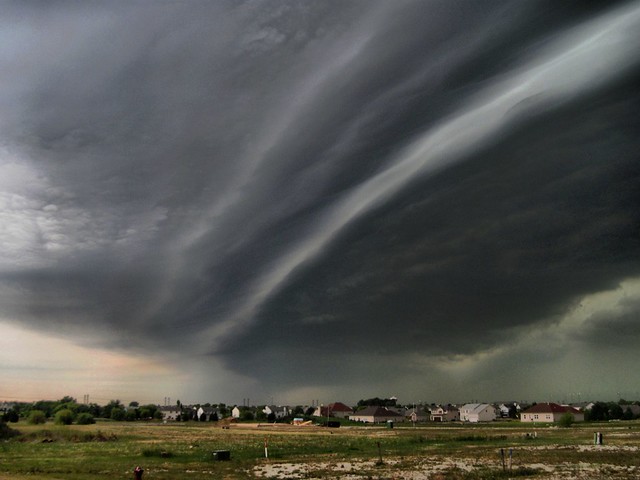
This is the opposite (north) end of that same cloud, which extended between both horizons:
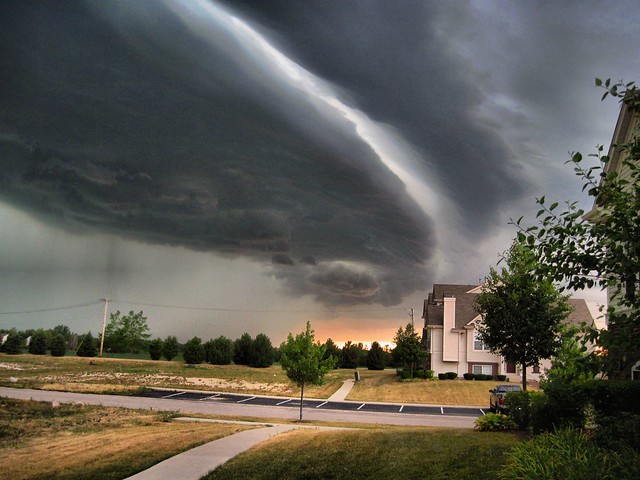
April 21, 2013:
View from our front door steps. Change is inevitable, from the destruction of my quiet "Fake Hammock," (in Florida, as it appeared in 2011 and as seen in 2013) now in full sunlight overgrown with grasses, to the clearing of the prairie in front of our Illinois condo...
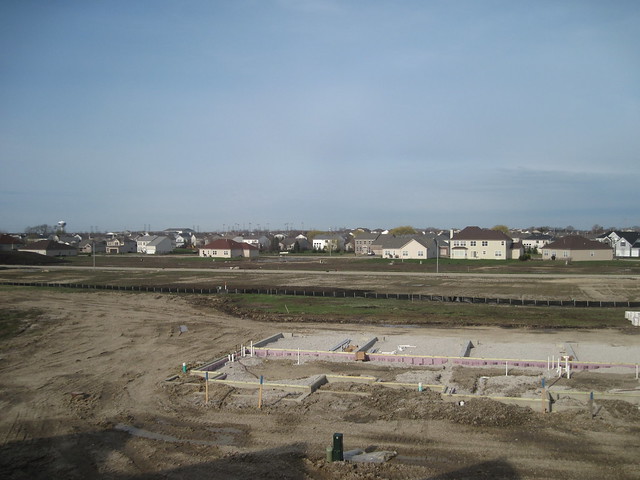
May 16, 2013:
This unit, one of 29 new buildings under construction, occupies the open space in front of our condo (taken from our upstairs bedroom window).
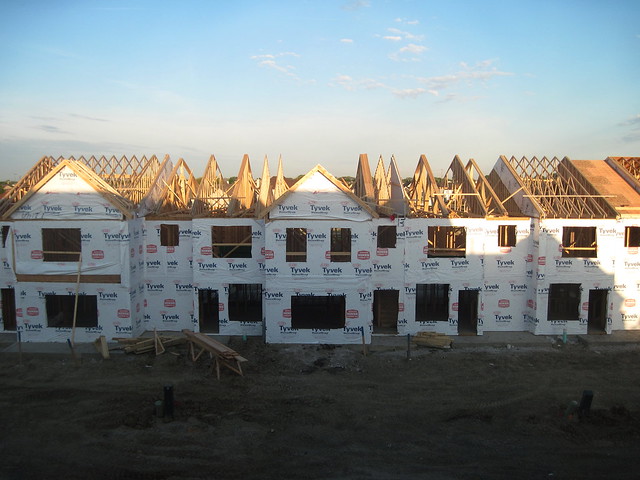
September 13, 2015:
The latest view from our front steps. Construction of the entire 3 city block development has been completed. Although the prairie which surrounded our condo has been completely developed and landscaped, a flock of Canada Geese and three Sandhill Cranes (barely visible in center of this photo at the distant end of the groomed "park" area) still find reason to rest and forage here.
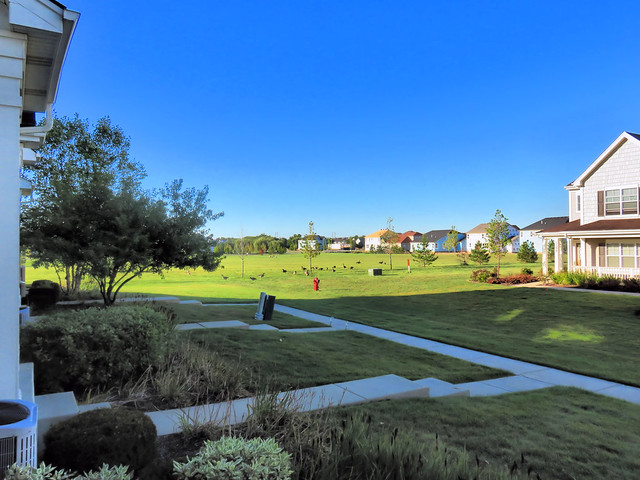
My telephoto lens provides a closer look at those Sandhill Cranes, a family unit, which will normally remain together through the fall migration. They usually lay two eggs, but in most cases only one (or neither) hatchling survives. The adults have bright red foreheads, lacking in the juvenile bird ("colt") to the left in this photo. The adults' plumage is stained brown by the minerals in the mud they use in preening, while that of the colt is mostly clean gray. It has been playfully chasing any Canada Goose which ventures close by.
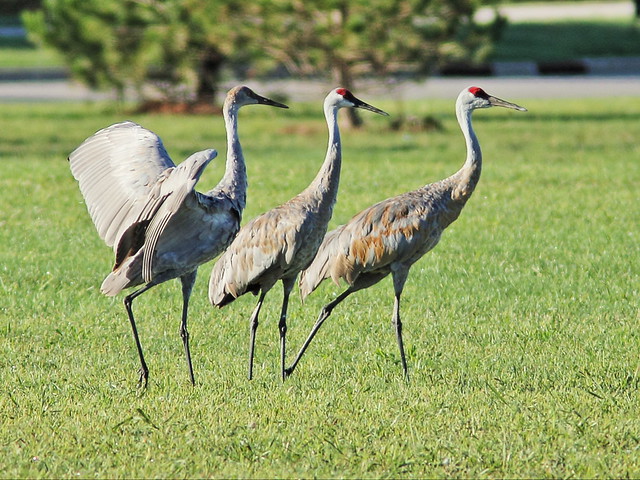
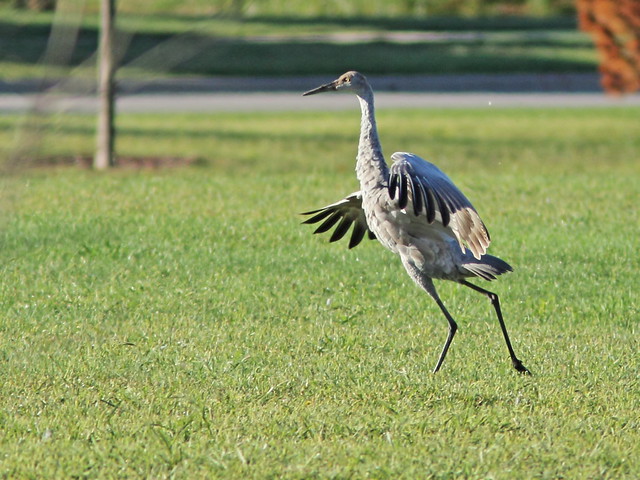
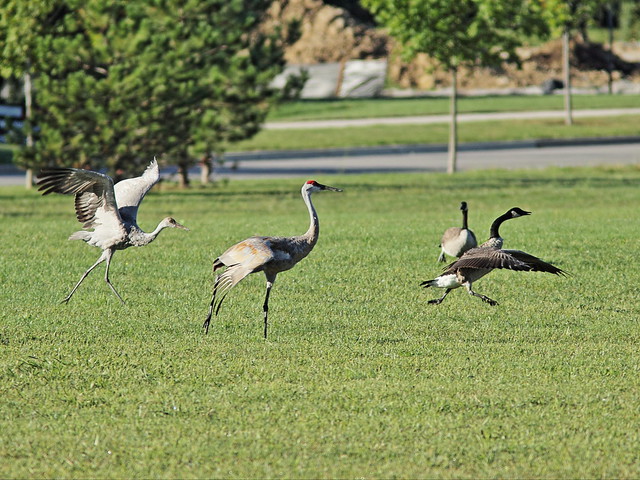
Presently there is a patch of relatively undisturbed open space only a few blocks away, at Jones Meadow Park. Here is a fence along the boundary of this small park, showing signs of age and weathering. It has provided perches for some memorable avian subjects,...
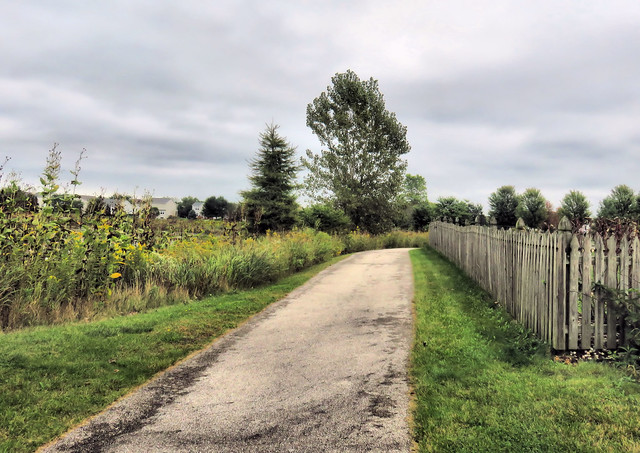
...among them, this Chipping Sparrow, when the posts were new, back in May of 2009:
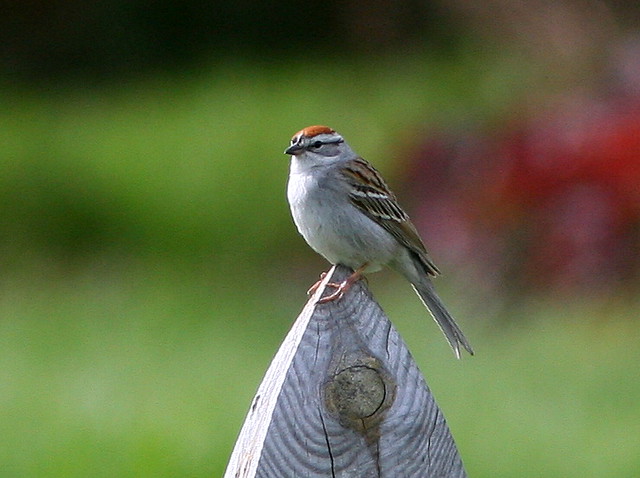
Brilliant red Cardinal Flowers, such as these next to a pond in nearby Lippold Park, are indeed shaped like birds. Their stamens look like heads with beaks, and each has two narrow wing-like sepals and a three-lobed sepal serves as a tail. One of the few truly bright red wildflowers, they add a splash of color to the fall landscape in wet areas, and attract migrating hummingbirds. To my eye, these flowers appear to be dancing gracefully in a circle:
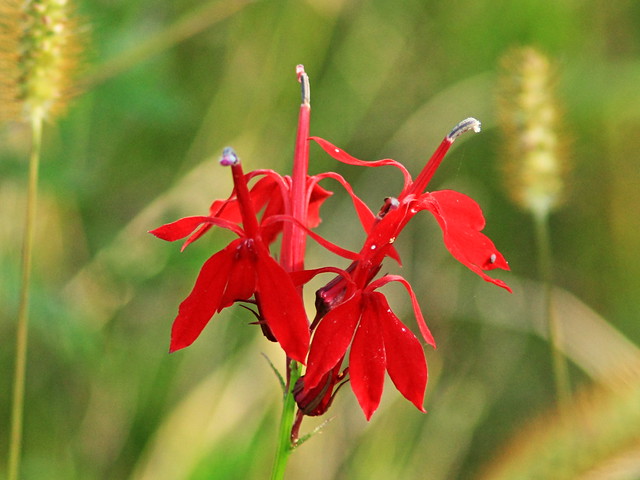
= = = = = = = = = = = = = = =
Linking to Misty's CAMERA CRITTERS,
Linking to Eileen's SATURDAY'S CRITTERS,
Linking to GOOD FENCES by Tex (Theresa).
Linking to SKYWATCH FRIDAY by Yogi, Sylvia and Sandy
Linking to WEEKEND REFLECTIONS by James
Linking to BirdD'Pot by Anni
Linking to Wild Bird Wednesday by Stewart
Linking to I Heart Macro by Laura
________________________________________________
Please visit the links to all these memes to see some excellent photos on display
________________________________________________
Just before we departed from Illinois last July I took a brief walk in the small park near our daughter's home in Batavia.
I caught this nice view of an American Robin perched on a the fence around the fishing dock on the creek:
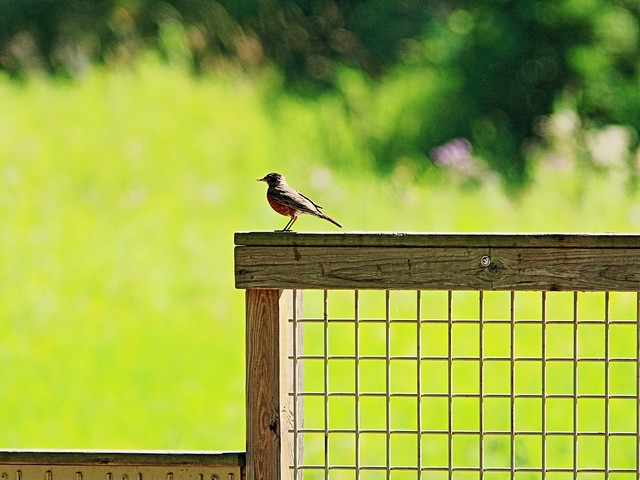
By chance, I looked up to see a Red-tailed hawk approaching from a distance. A smaller bird, which I eventually identified as a Red-winged Blackbird, was attacking the hawk. When the two moved within camera range I took a series of photos. I noticed that the hawk was carrying a dark object in its talons and a couple of leafy branches from a tree or shrub trailed behind. Hawks sometimes "decorate" their nests with fresh branches, which has been interpreted as serving to repel parasites.
At first I thought it was the nest of some creature, but when I processed the images at home I discovered that it was the body of an immature Cedar Waxwing. Presumably, the hawk had incidentally picked up some greenery as it lunged at the small bird. (Click on images for larger views-- the waxwing's tail, which protrudes out from under the left side of the hawk's tail, is gray with a yellow tip):
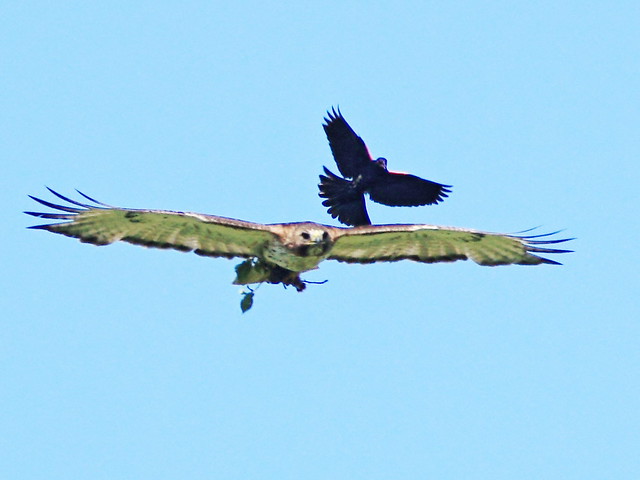
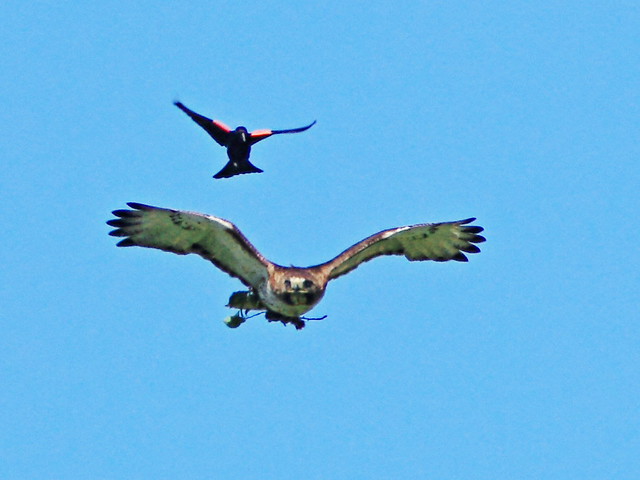
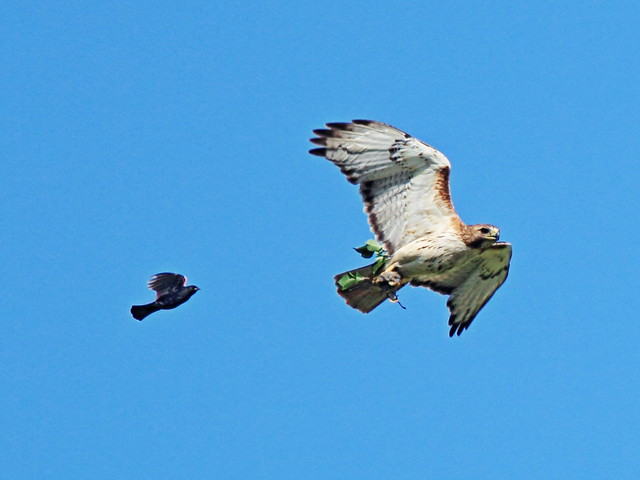
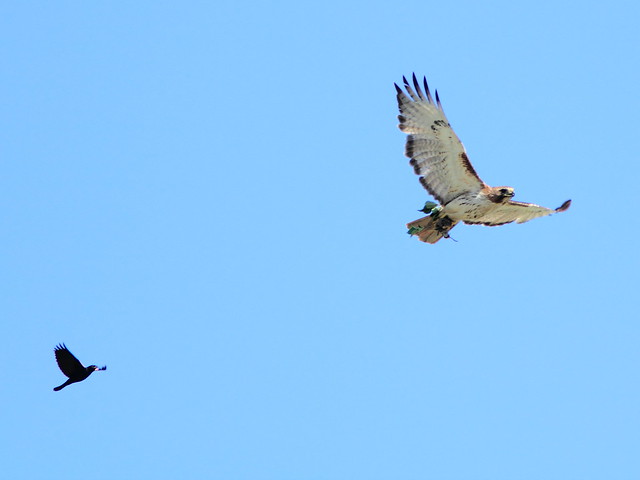
This hawk is likely a member of the family that has nested in an old oak that borders a tree nursery adjacent to the park. They have several favored roosting places, including neighbors' rooftops, where this pair was attacked by Common Grackles:
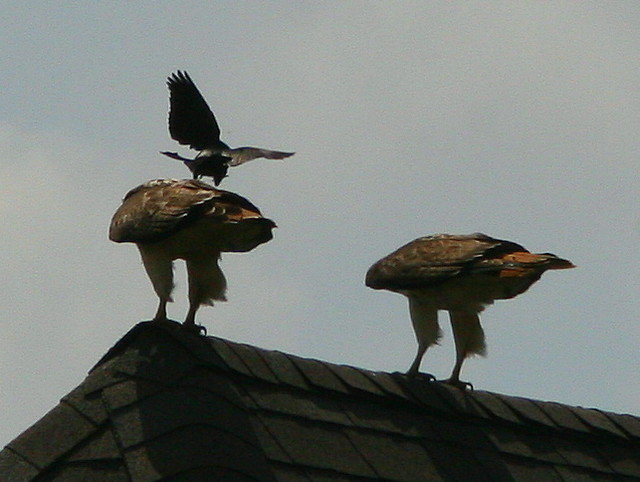
Here. a Red-winged Blackbird is in a heightened state of excitement as a Red-tail approaches:
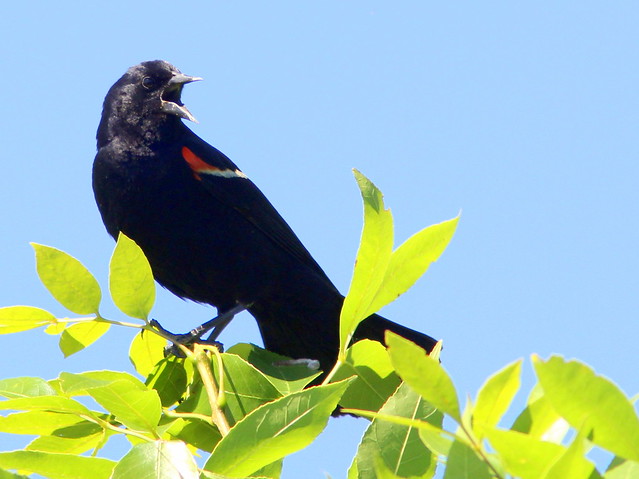
The blackbird flies up to attack the hawk:
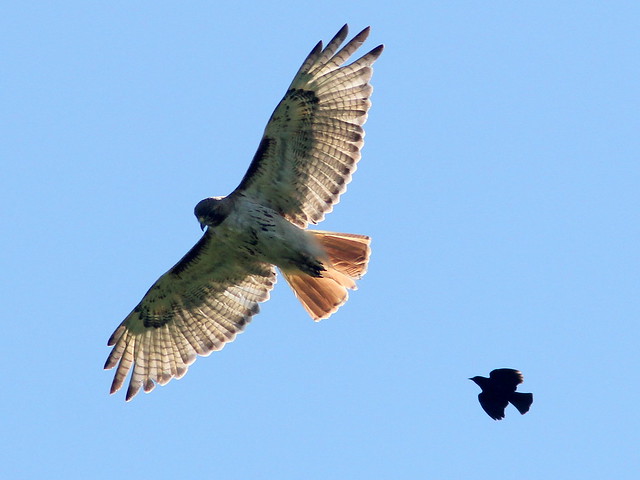
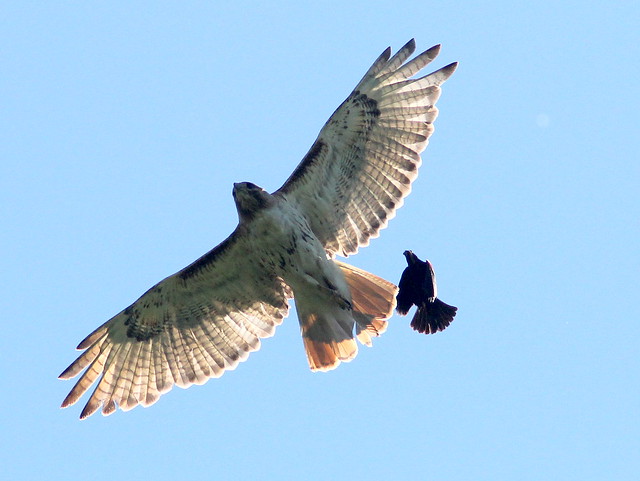
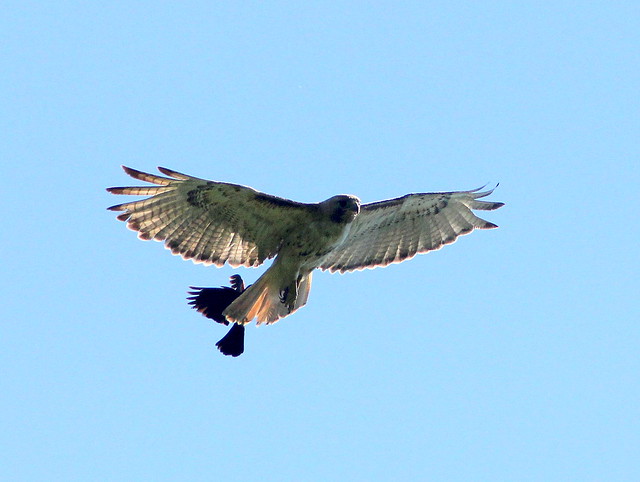
During the previous week we saw these two perched on a utility pole. The one on the left is a young bird, as its tail is not yet red:

The older bird flew to another favored roost nearby, the rotating tornado warning siren! Since warnings are not all that unusual, I find it hard to believe that it would return after being startled by the sudden movement and extremely loud noise of the huge siren:
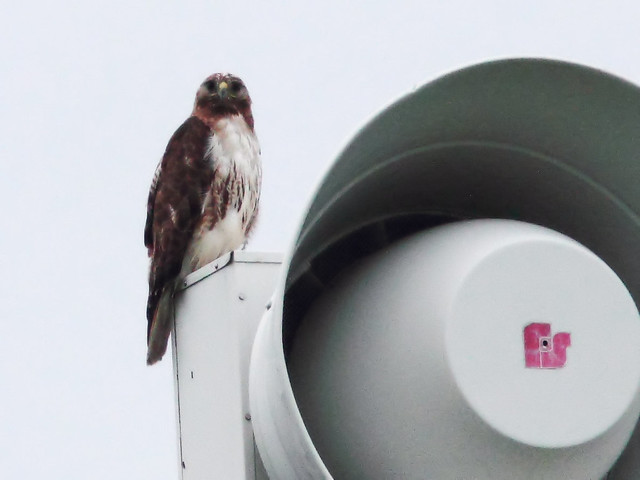
Red-tailed Hawks have provided me with some particularly nice images:
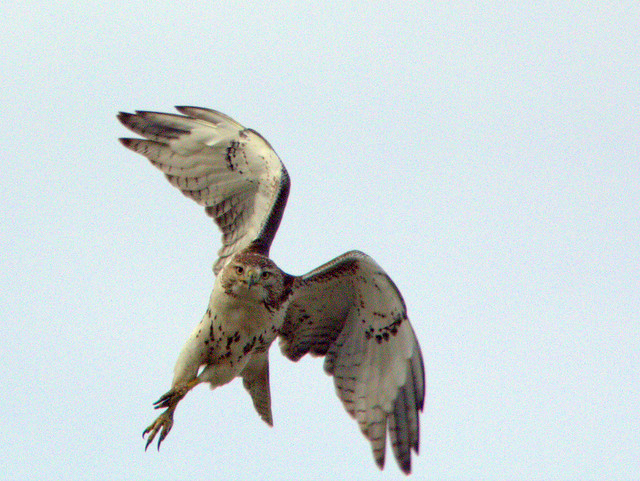
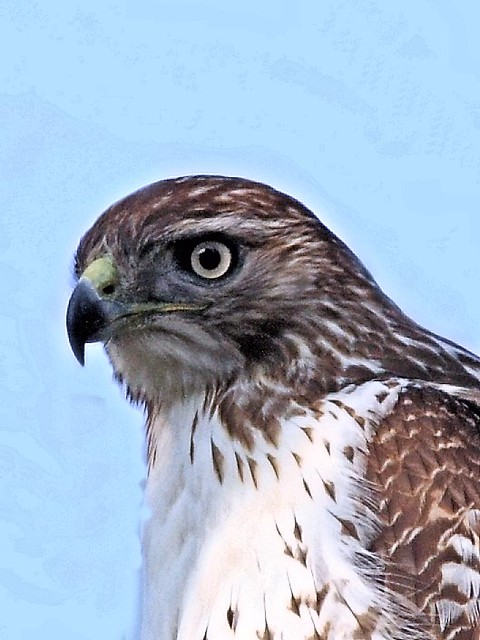
We visited Nelson Lake/Dick Young Marsh Forest Preserve before departing from Illinois:
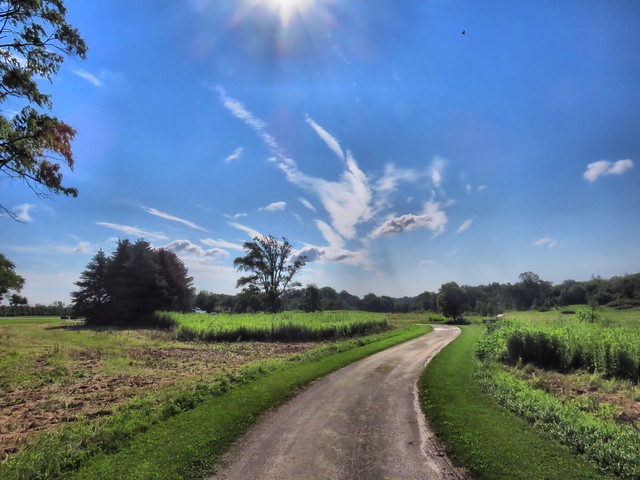 Back home in Florida, a Snowy Egret cast a fine reflection:
Back home in Florida, a Snowy Egret cast a fine reflection:
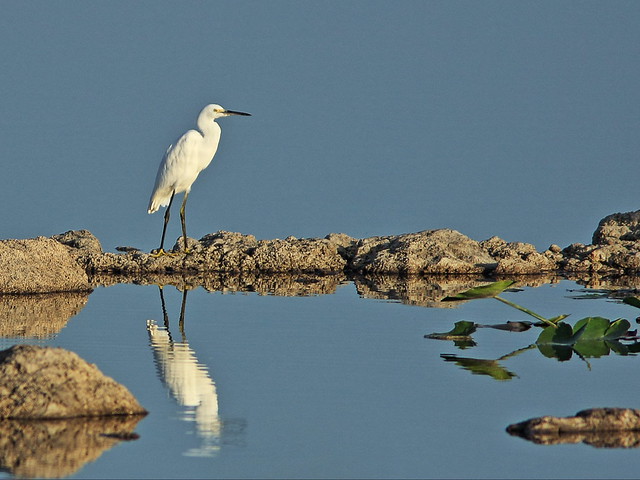
A near perfect White Peacock butterfly specimen was one of scores that must have just emerged after a couple of rainy days:
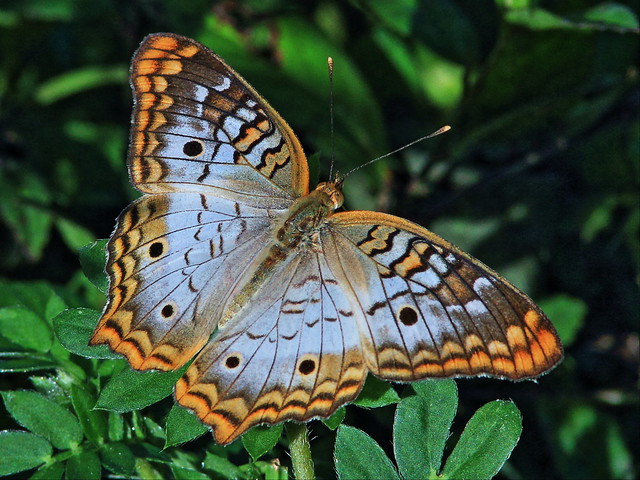 = = = = = = = = = = = = = = =
= = = = = = = = = = = = = = =
Linking to Misty's CAMERA CRITTERS,
Linking to Eileen's SATURDAY'S CRITTERS,
Linking to GOOD FENCES by Tex (Theresa).
Linking to SKYWATCH FRIDAY by Yogi, Sylvia and Sandy
Linking to WEEKEND REFLECTIONS by James
Linking to BirdD'Pot by Anni
Linking to Wild Bird Wednesday by Stewart
Linking to I Heart Macro by Laura
________________________________________________
Please visit the links to all these memes to see some excellent photos on display
________________________________________________
Gold comes in many colors, mostly shades of yellow. In temperate climes these are the colors of fall. In Florida, the foliage resists the change, but we find gold in the sky. We have temporarily left behind the golden sunrise over our lake in south Florida:

Upon returning to Illinois after spending much of the summer in the Sunshine State, we welcomed the refreshing cool breezes and the profusion of wildflowers on the prairie. Yellow now predominates, in the flowers and in the plumage of the most common bird that nests among them.
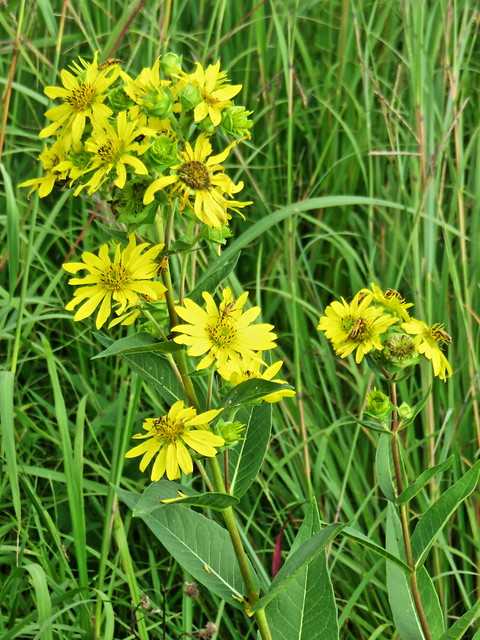
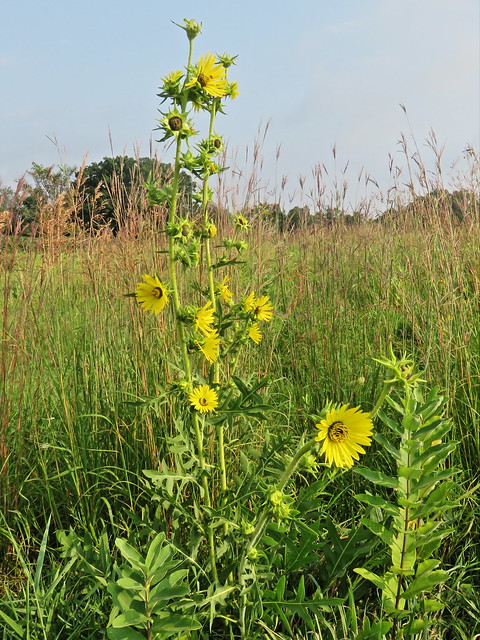
American Goldfinches bounce over the prairie, twittering their flight song, repeating phrases ("per-chick-o-ree") synchronized with each dip in undulating flight:
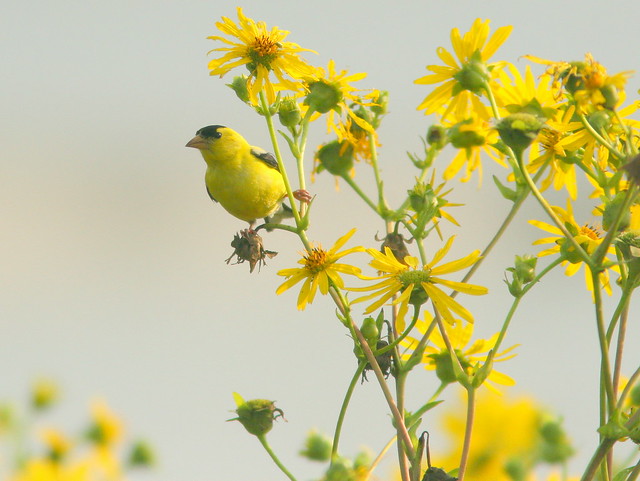
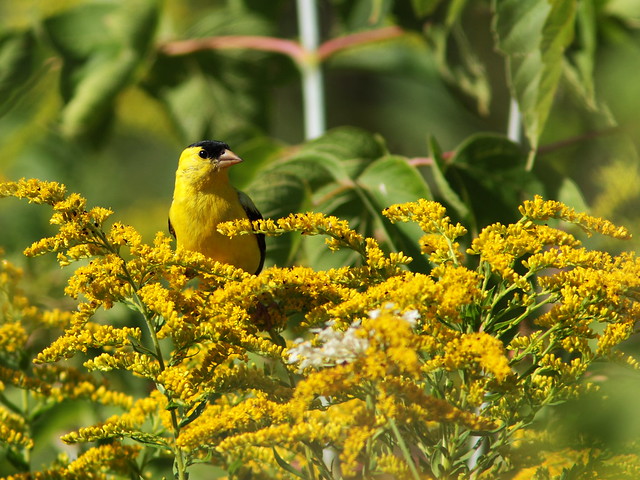
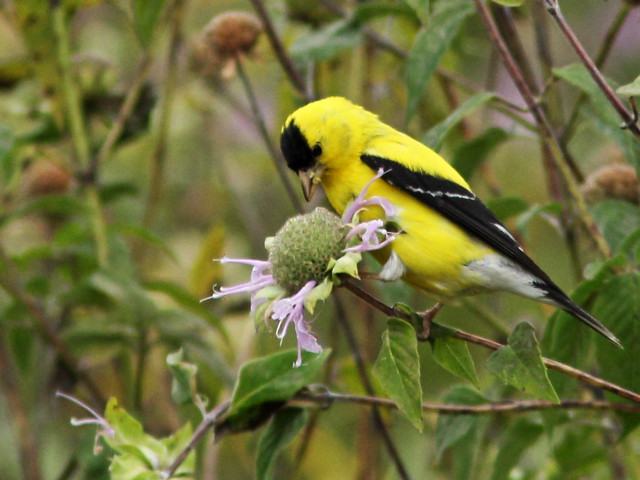
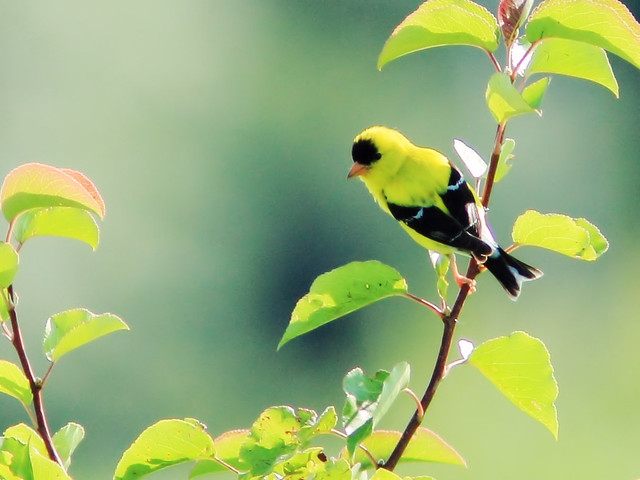
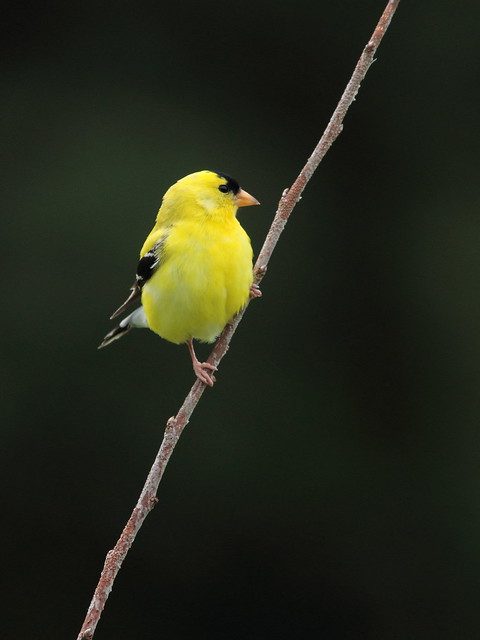
Male Bobolinks have shed their distinctive black and white breeding colors and have molted into golden basic plumage, quite identical to females in appearance:
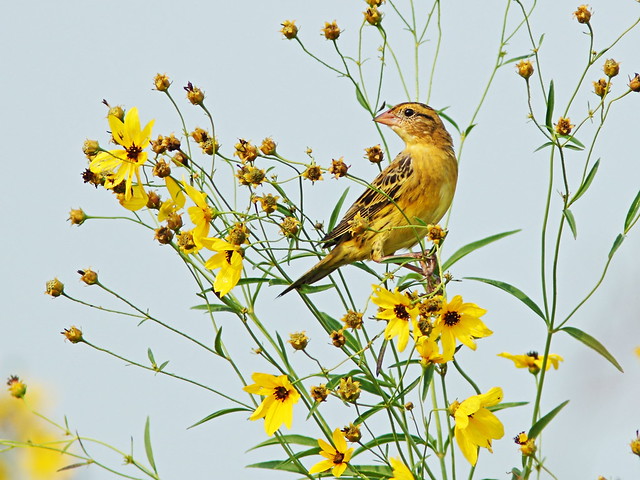
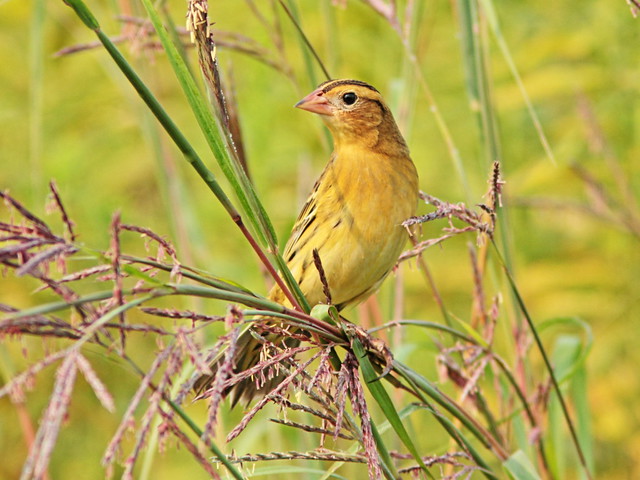
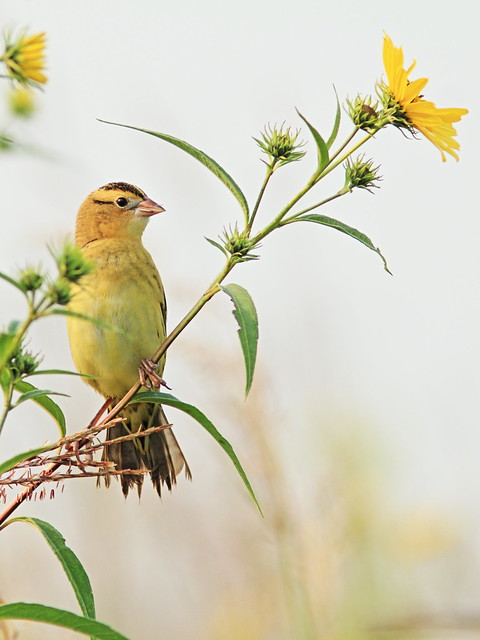
Greenish-gold Tennessee Warblers are heading south for the winter:
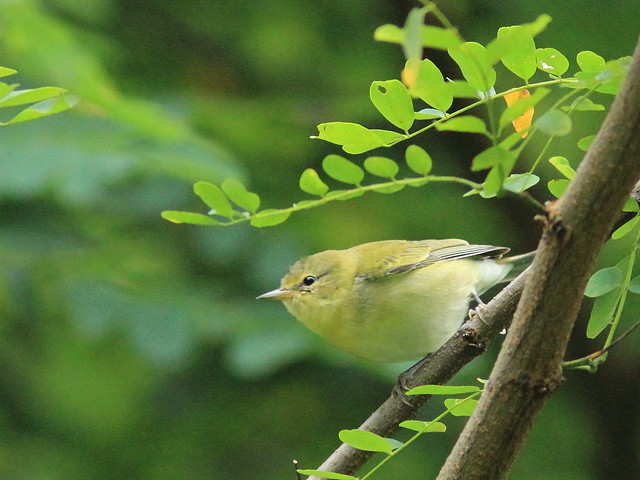
A lowly grasshopper on a milkweed leaf reflects the light as would a replica made of precious metal:

The Chickweed Geometer moth adds a regal touch of purple:
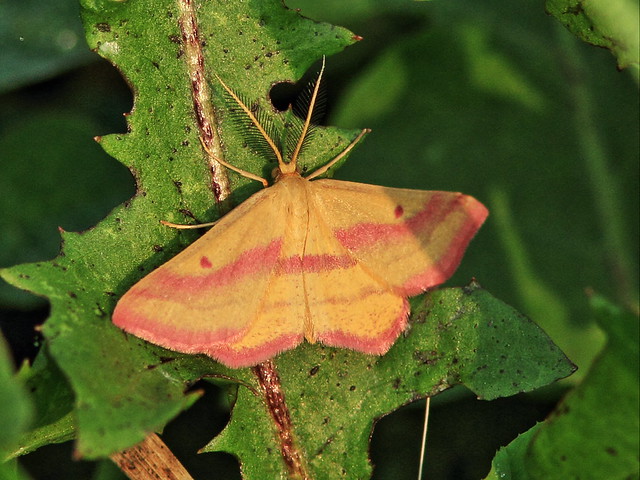
Sunlight suffusing through the turning leaves of the canopy provide a golden backdrop for a female House Finch...

...and for this Chipping Sparrow:
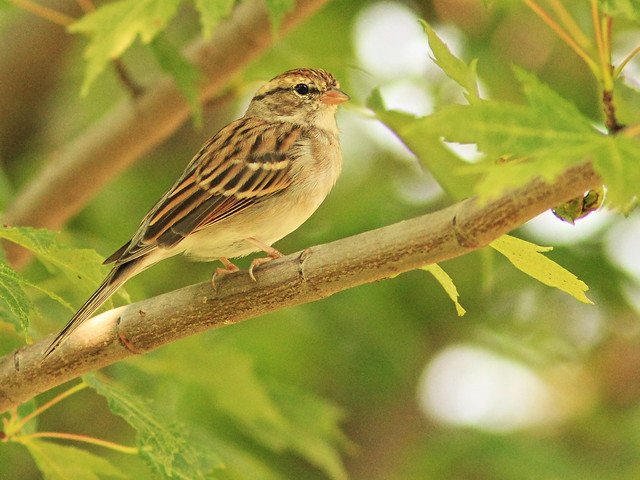
An Eastern Wood-Pewee is bathed in golden bokeh:
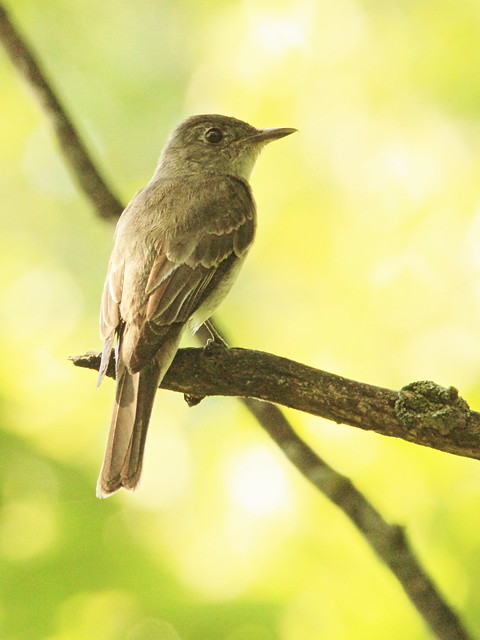
The plumage of a Cedar Waxwing is best described as burnished gold:
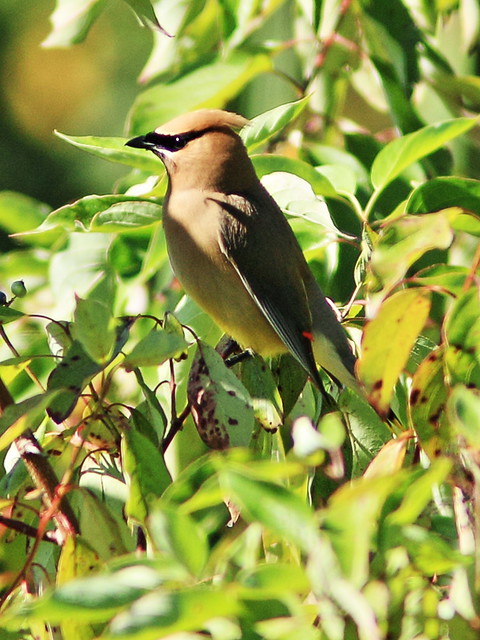
Butterflies are becoming scarce as gold. I suspect that the widespread use of insecticides, out of fear of West Nile Virus, may be a factor. Great Spangled Fritillary (my first):
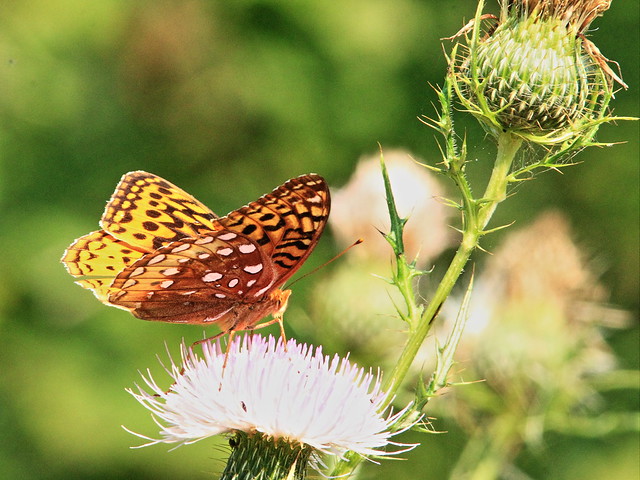
Back-lighting accentuates the gold tones in the wings of a Monarch butterfly, another creature threatened by human activity, particularly loss of habitat and host milkweed; I have examined hundreds of milkweed plants the past few weeks and have found no caterpillars:
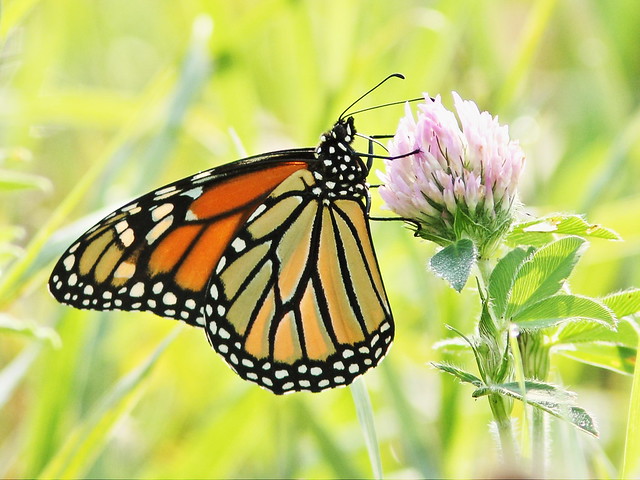
Pearls come in every color of the rainbow. This is a Pearl Crescent:
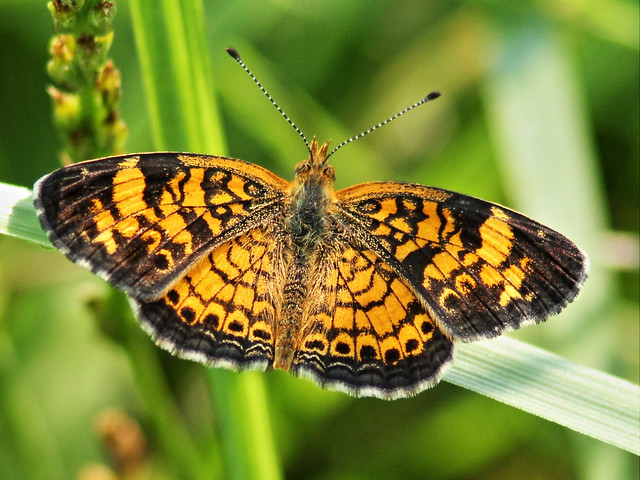
One of the namesake hills in nearby Hickory Knolls woodland is a mound of gold:
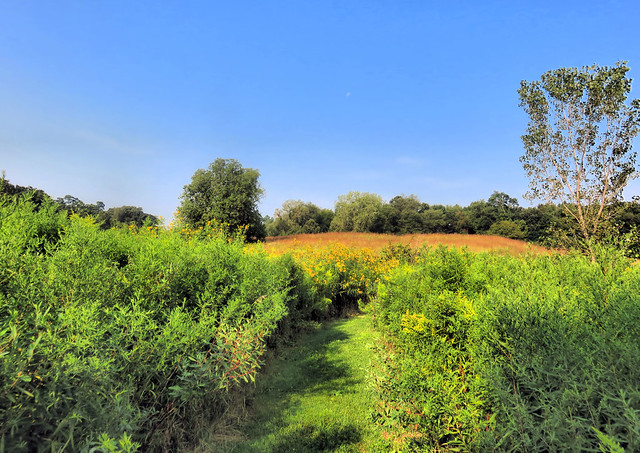
We spent a long Labor Day weekend in Door County, a narrow peninsula in northeastern Wisconsin, about 275 miles (440 km) north of our Illinois home. It projects out into Lake Michigan (seen here), flanked by Green Bay to the west:
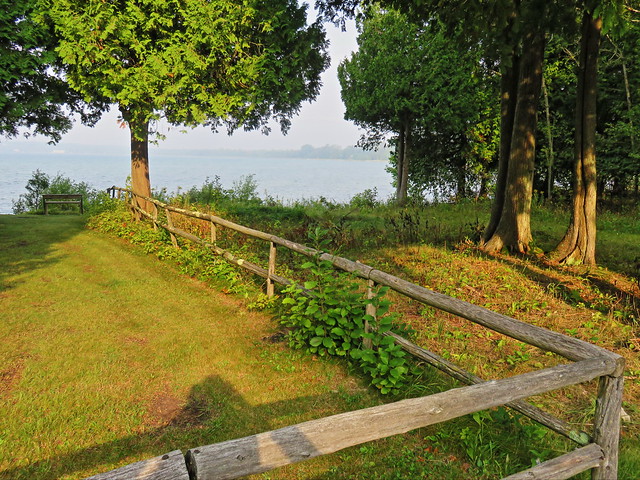 On our first morning the yellow of goldenrod pierces through the fog that has rolled ashore:
On our first morning the yellow of goldenrod pierces through the fog that has rolled ashore:
 The fog mutes the reflections of the dock at the marina:
The fog mutes the reflections of the dock at the marina:
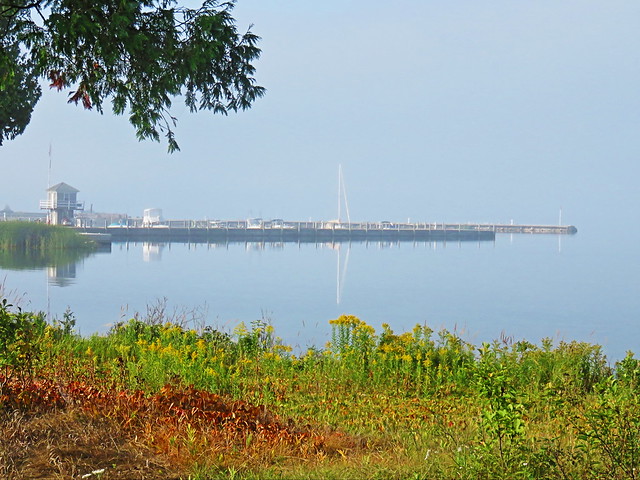 A Bumblebee collects pollen from a Purple Coneflower:
A Bumblebee collects pollen from a Purple Coneflower:
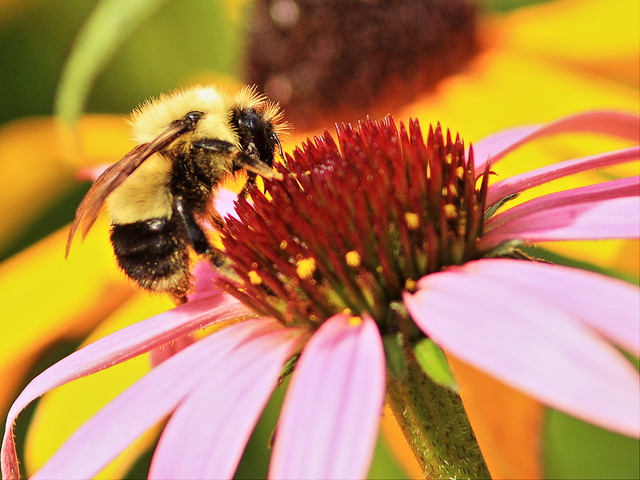 A Clouded Sulphur contributes to the color scheme:
A Clouded Sulphur contributes to the color scheme:
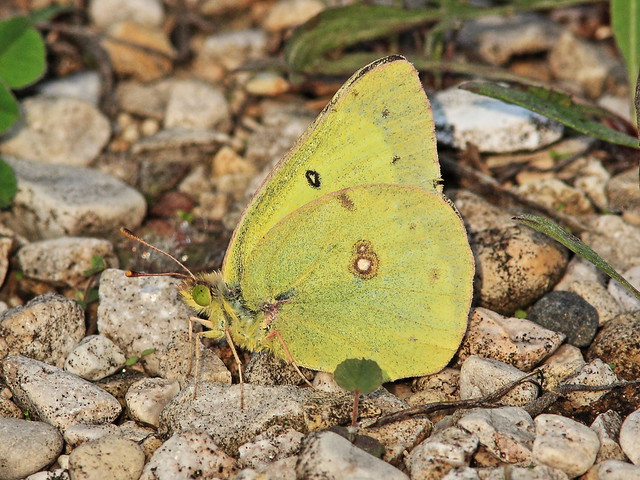 An inquisitive Red Squirrel clings to the stringy bark of a White Cedar, which a predominant tree in coastal areas of northern Wisconsin:
An inquisitive Red Squirrel clings to the stringy bark of a White Cedar, which a predominant tree in coastal areas of northern Wisconsin:
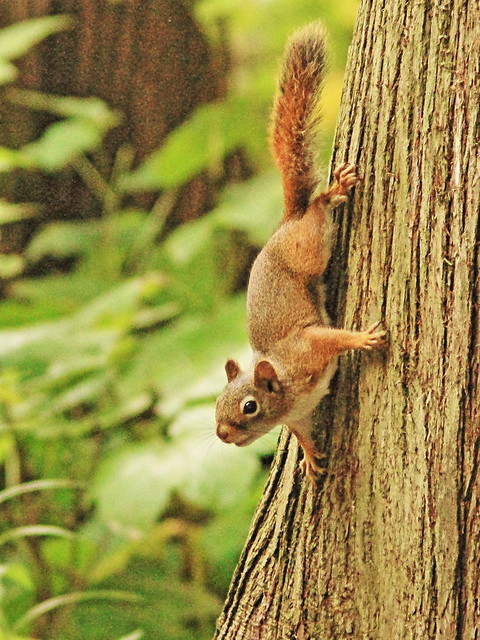 Back home in Illinois, Agramonte, our granddaughters' golden Tibetan Mastiff, greets us at the driveway:
Back home in Illinois, Agramonte, our granddaughters' golden Tibetan Mastiff, greets us at the driveway:
